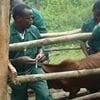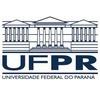Check out what is new in Pig Industry
Find the best technical articles, forums, and videos on Pig Industry at Engormix. Enter now and interact with the world's largest agricultural social network.
1. Introduction Classical swine fever (CSF) is one of the most important infectious viral disease of domestic pigs and wild boars, caused by the classical swine fever virus (CSFV), which belongs to the species Pestivirus C, is an enveloped RNA virus belonging to the growing genus Pestivirus, within the family Flaviviridae [1–3]. CSFV strains can be divided into three genotypes, with three to four sub-genotypes [4]. In the American continent, the circulating viruses belong...
Comments : 0
Recommendations: 0
INTRODUCTION Estrus synchronization is a well-established tool for the reproductive management of a variety of livestock species. Manipulating the estrous cycle of domestic animals is thus essential for improving livestock productivity, as it helps to generate more income for the farmer through the utilization of assisted reproductive techniques like artificial insemination, in vitro fertilization and embryo transfer technologies. In gilts, estrus manipulation is being...
Comments : 0
Recommendations: 0
...
Comments : 0
Recommendations: 0
Background Spray-dried plasma (SDP) is one of additives in swine diets [1–3] and contains high protein with balanced contents of amino acids and various physiological components, such as immunoglobulins, peptides, glycoproteins, and others [4], that contribute to modulation of microbial populations [5, 6], immune responses and inflammation [4, 7, 8], and intestinal morphology [8, 9], and others [4]. Based on these beneficial effects, SDP is typically used in nursery...
Comments : 0
Recommendations: 0
The characterization of the microbiota diversity inhabiting particular mucosal surfaces or other body sites has been an active topic of research in recent years, due to the involvement in many vital processes. In the gut, the high microbial diversity has the potential to provide metabolic activities that the host lacks. Specifically, the gut microbiota of mammals has been shown to confer health benefits to the host through the production of digestible food components, inhibition and...
Comments : 0
Recommendations: 0
In 2022, hog production will decline by 5 percent due to low inventories and a smaller sow herd, which resulted from significant slaughter and delayed restocking in 2021. In 2022, government policies will disincentivize small- and medium-scale operations...
Comments : 0
Recommendations: 2
...
Comments : 0
Recommendations: 0
...
Comments : 1
Recommendations: 0
...
Comments : 0
Recommendations: 0
Feed oxidation: What are the dangers? In pig diets, various sources of lipids are added to increase caloric density, provide essential fatty acids, improve feed palatability, improve pellet quality, and reduce dust (Keer et al., 2015). Some of the feed ingredients...
Comments : 0
Recommendations: 0
...
Comments : 0
Recommendations: 0
Introduction Nursery pig diets have been conventionally formulated with animal protein sources and dairy products (e.g., fish meal, plasma meal, and whey protein). However, this has resulted in a complex diet composition and high feed costs. Many attempts have therefore been made to simplify the conventional complex diet by increasing the proportion of soybean meal as a way to save on feed costs in nursery pig production. Previous studies (Skinner et...
Comments : 1
Recommendations: 0
Introduction Advances in genetics has certainly produced commercial strains of poultry and pig with greater performance (e.g. growth, reproduction) with minimal feed input. For example, over the last 5 decades, the body weight of broilers at 42 days has increased by 25-50 g per year and the feed conversion ratio to 2 kg body weight has improved 2-3 points annually (Havenstein et al., 2003; Gous, 2010; Aviagen, 2019). With the introduction of crosses in...
Comments : 0
Recommendations: 3
Introduction Trace minerals are essential elements in the maintenance of life for man and animal. However, what is not well understood or appreciated is how absorption and retention of these minerals can affect animal and human wellbeing, psychological status, health, and performance. While required in small amounts, just milligrams per day, trace minerals play critical roles as catalytic, regulatory, and structural components in multiple enzyme and...
Comments : 0
Recommendations: 0
Introduction
The protein is an essential nutrient for every animal diet. It is a source for growth, maintenance, immunity and production for all animals. Actually, every animal species have they own requirement for amino acids. The amino acids are classified as essential amino acids or nonessential amino acids. The essential amino acids are the one not synthetized in vivo and need to be supplier for the diet. There is another...
Comments : 0
Recommendations: 0
Introduction Although bacteria are too small to be seen without the aid of a microscope, their abundance by mass has been estimated to be 1,166 times larger than the mass of all humans. All animals contain populations of bacteria on outer and inner body surfaces such as the skin and the gastrointestinal tract, with the gastrointestinal tract being by far the most densely populated. It has been estimated that cattle, sheep, goats, pigs, chickens, ducks...
Comments : 0
Recommendations: 0
INTRODUCTION Sow productivity has increased considerably in recent years, mainly owing to an increase in litter size, which has resulted in an increased metabolic demand for nutrients to support fetal growth and colostrum and milk production (TOKACH et al., 2019). However, this increase in nutritional requirements has not been accompanied by the pattern of sow intake, thus, sows undergo excessive mobilization of body protein during lactation (YANG et al., 2000a). This can affect...
Comments : 2
Recommendations: 1
Introduction Antimicrobial additives have been used since the 1950s and are an important alternative to allow adequate productivity for animals raised under increasingly intensive conditions. As a consequence of the widespread use and results of AGP in livestock production, there is interest in the study of these additives by meet industry and the academic community. A total of 68.200 publications are presented as results when using the words “broiler” and...
Comments : 0
Recommendations: 0
Introduction This article identifies the most significant research innovations that, in our opinion, have been applied by the North American pork industry in the past decade. They are primarily the result of leading edge research in North America. Research discoveries were not considered unless they were being integrated into practice, with the exception of gene editing for pathogen control, which is in the approval process. Innovations that we identified as...
Comments : 0
Recommendations: 0
After 26 editions, this will be the first time the Congress will be held both virtually and on-site, bringing together attendees, businesses and...
Comments : 0
Recommendations: 0



.jpg&w=3840&q=75)



.jpg&w=3840&q=75)




















